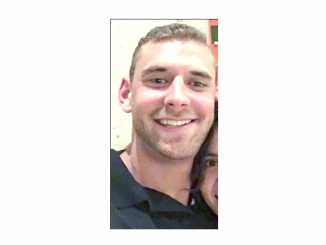
BY BRADEN CARTWRIGHT
Daily Post Staff Writer
A 55-year-old homeless man named Donald Williams died on the Caltrain tracks last week, the Santa Clara County Medical Examiner-Coroner’s Office said Wednesday.
The death went unreported until now because Caltrain has a new policy of not telling the public when a train hits a person, in an effort to stop copycat suicides.
The coroner’s office hasn’t determined if the death was an accident or a suicide. Williams died from blunt force injuries at Stanford Hospital on Aug. 21, the coroner’s office said.
Palo Alto Councilman Pat Burt said at a city Rail Committee meeting on Aug. 20 that Caltrain is trying to make security improvements, like the detection system that alerts police when someone is on the tracks in Palo Alto.
“Caltrain is just beginning the process of appraising what would be involved with a corridor-wide best practices, from San Francisco to San Jose at a minimum, what it would cost, and how to pursue funding and implement it,” Burt said.
Since Caltrain stopped reporting suicides in May, there have been at least three deaths on the tracks. Strikes went unreported on May 12 and July 1, Caltrain spokesman Dan Lieberman said.
Trains were delayed for hours after a disruption in Sunnyvale, but a Caltrain spokesman wouldn’t say the reason.
Dylan Scirpo, 17, of Menlo Park, was hit on Aug. 11 before starting his senior year at Menlo-Atherton High School.
The Mineta Transportation Institute at San Jose State University did a study on 193 Caltrain fatalities between August 1992 and December 2009, trying to find any patterns.
The study found that Caltrain deaths stayed around 10 a year, and there wasn’t any particular hot spot along the tracks.
“The factors that cause suicides are external to the system,” said the study, led by professor Jan Botha.
The study counted 123 suicides and 70 unintended deaths, from issues like cars stalling on the tracks, drivers going around gates or pedestrians crossing where they aren’t supposed to. That means 64% of the deaths along the tracks are suicides.
Help is available. If you or someone you know is having a mental health crisis, call or text the suicide and crisis lifeline at 988.


Pat Burt says, “Caltrain is just beginning the process of appraising what would be involved with a corridor-wide best practices …”
I’ve lived here 40 years and there have always been railroad deaths. This is nothing new. Why is Caltrain only now “beginning the process” of dealing with this?
An electrified 2000 Volt cattle fence located on both sides of the CalTrain tracks would be an ideal deterrent to mitigate the suicides of those individuals intent on jumping in front of a moving 79 mph express train. The source to power the fence is already available nearby, and the messy clean-up task would be far less involved and would also lower the biohazard risk for clean-up personnel.
Sadly, stopping Caltrain suicides is not that easy, Maximillian. They occur at places where the tracks cannot easily be closed: at stations (for obvious reasons) and at street crossings, which now cost $250m to over $600m to “grade separate” with years-long disruptive projects to make the streets pass under or over the tracks instead. These very costly grade separations cannot stop suicides — the overwhelming majority of pedestrian deaths — which can (and already do) shift to remaining track access points such as nearby stations.
With the introduction of new electric trains, we should inquire about the necessity of maintaining loud train horns – since it’s not effective in saving these lives. Given the enhanced stopping capabilities of these modern trains, is it still justifiable to continue using horns that significantly disrupt the quality of life for residents near the tracks?
The increased frequency of trains expected with electrification will undoubtedly exacerbate this noise pollution.
Caltrain should be held accountable for the negative health impacts of excessive noise pollution, which can be as detrimental as air pollution. Without clear evidence of the horns’ effectiveness in preventing accidents/suicides, the increased disruption to civilian life could potentially lead to legal disputes.
Unless Caltrain has quiet zones (areas where engineers are not required to sound the horn), the Federal Railroad Administration requires horns to be sounded, and the railroad can be fined for not following the regulations. And a more effective braking system will never be able to slow or stop a train in time when someone jumps in front of the train or is lying on the track. As a locomotive engineer, I ran trains for a commuter agency and Amtrak. I struck a 19 year old male who jumped in front of my train and a 20 year old who, it turns out, was inebriated. Engineers NEVER forget those locations because they simply can’t stop in time to save a life when their train is traveling at high speeds. And if a person want to kill themself, a loud horn will not stop them.